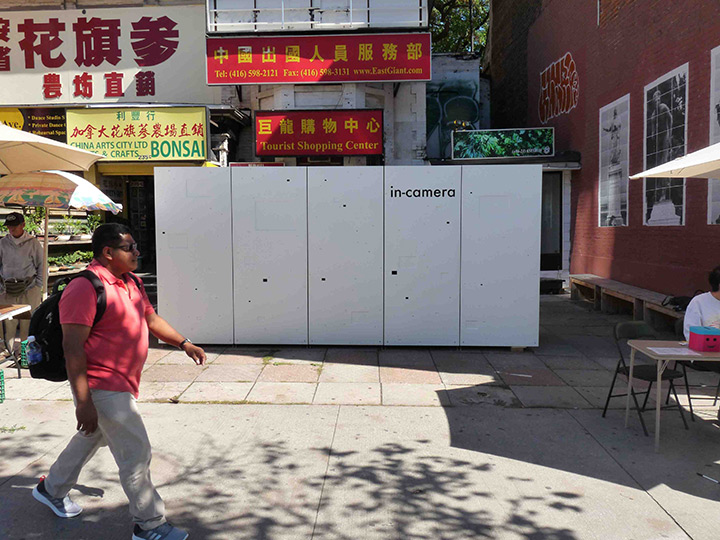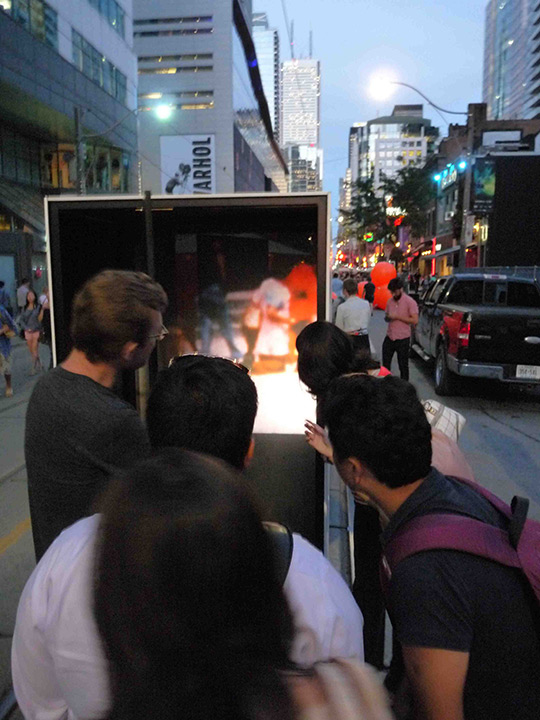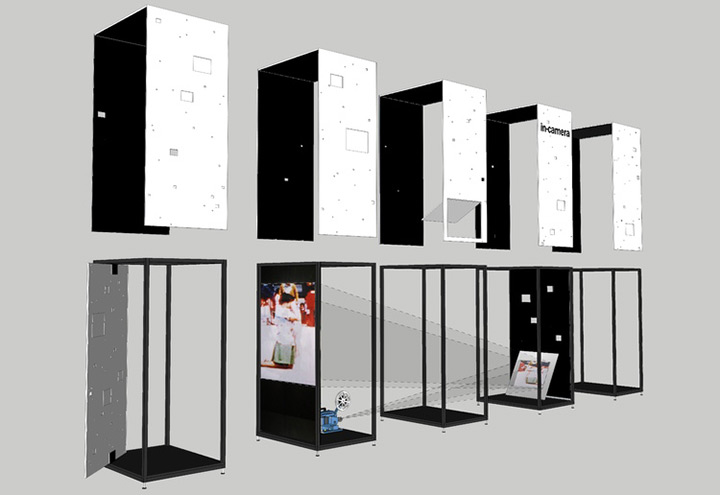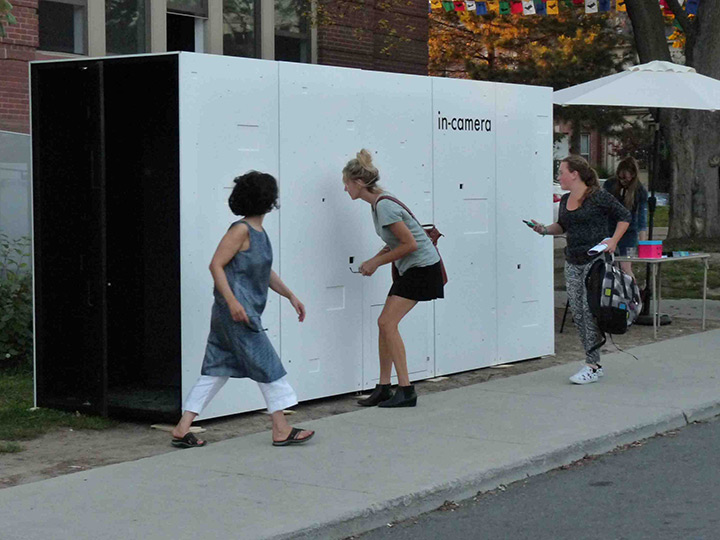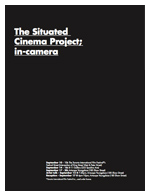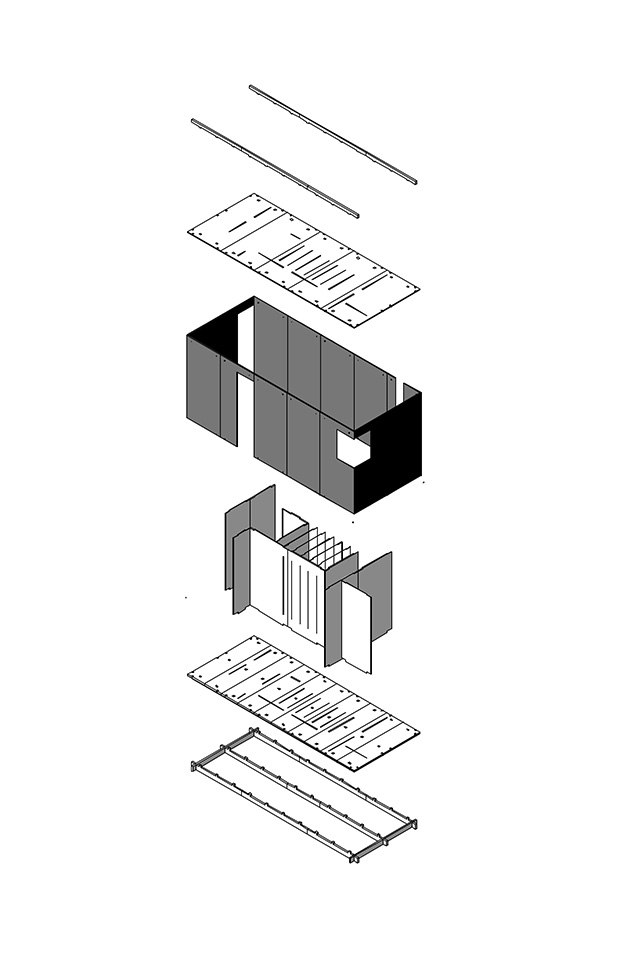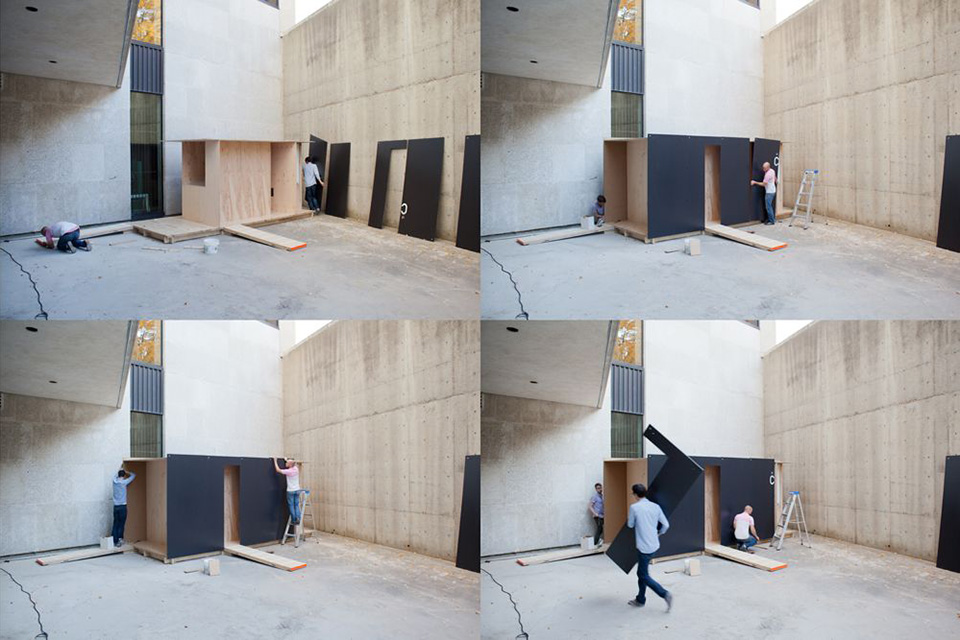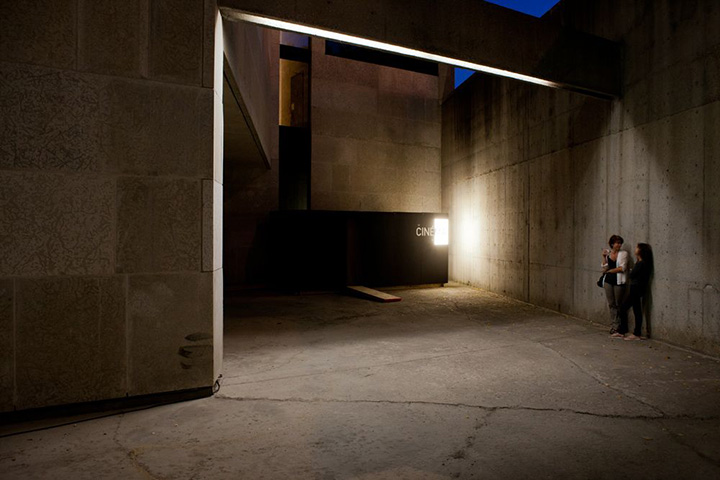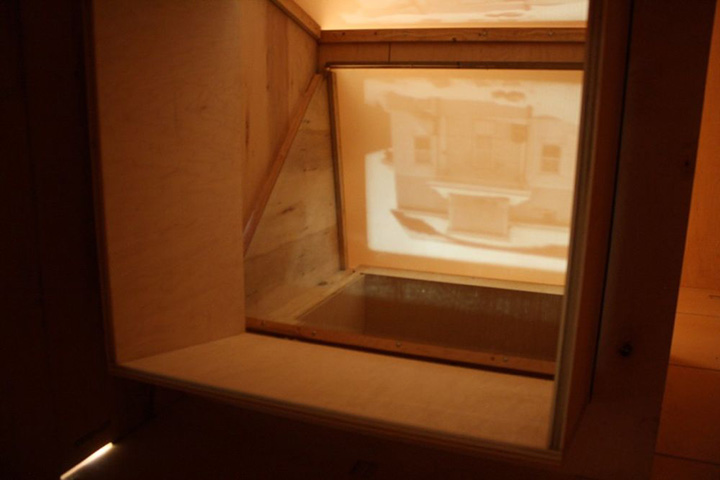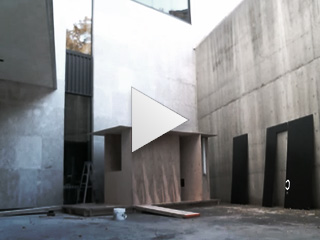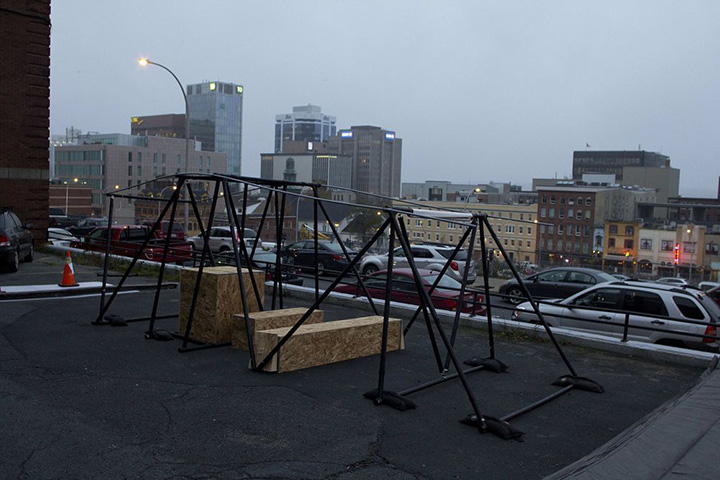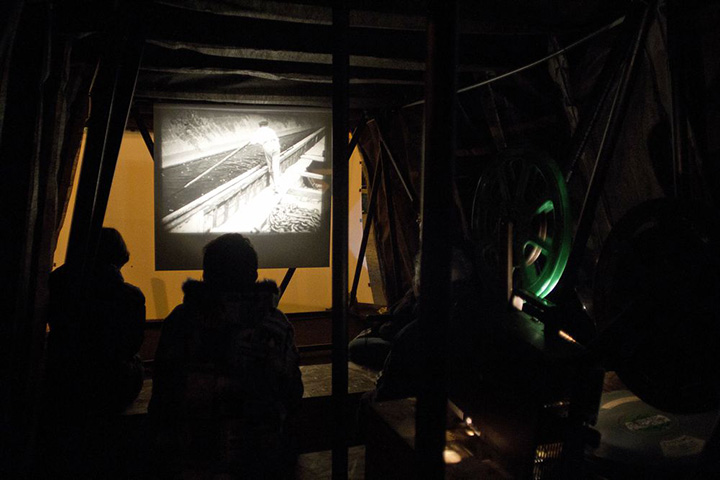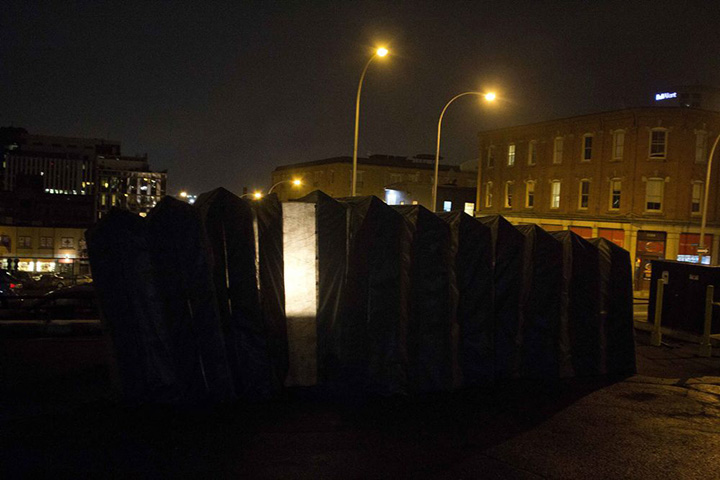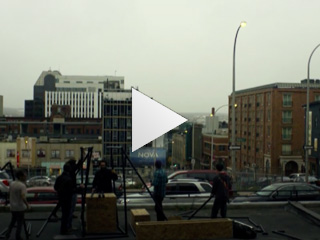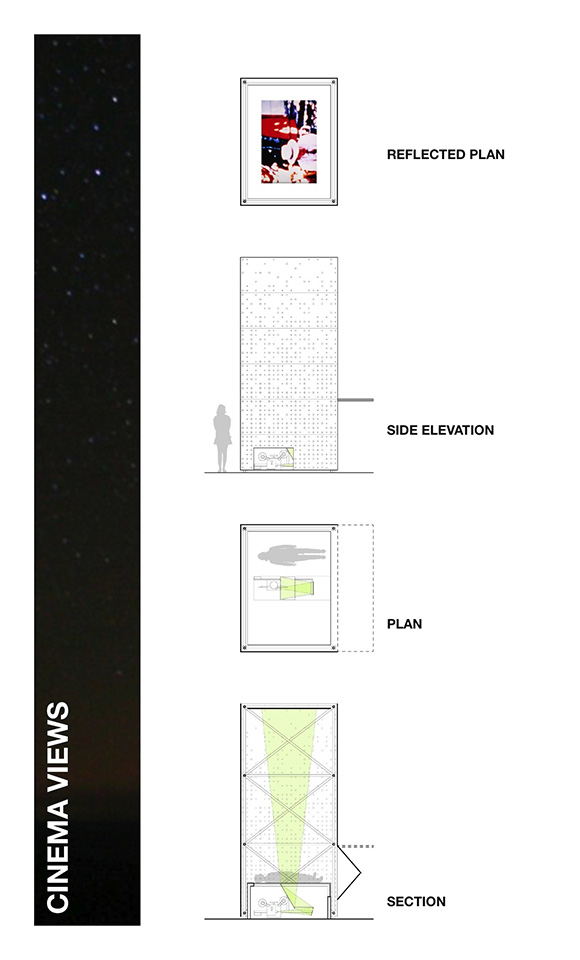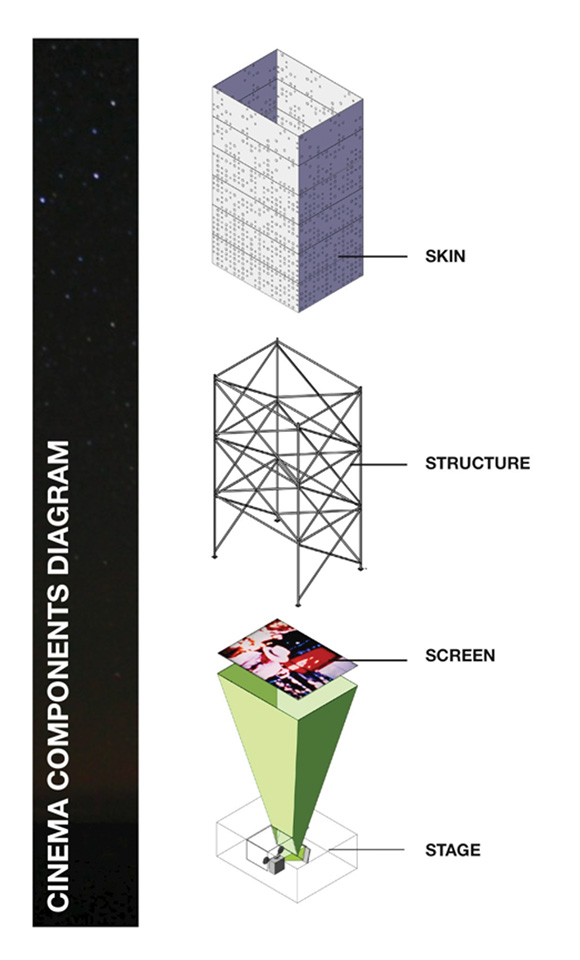
Situated Cinema in-camera
A project by Solomon Nagler, Alexendre Larose,
Thomas Evans and Jonathan Mandeville
Hand-Processed 16mm Ektachrome Positive Film Loop,16mm Projector and Looper, Fabricated Metal, Mirror.
The Situated Cinema Project; in-camera is a portable micro-cinema commissioned by Pleasure Dome to celebrate their 25th anniversary. Created by Halifax-based filmmaker Solomon Nagler with architects Thomas Evans and Jonathan Mandeville of passage studio and fabricated by Hollis + Morris (Toronto) the structure features pilgrimage (16mm, 4 min. looped, 2015) — an experimental film created by Nagler and his artistic collaborator Alexandre Larose.
The Situated Cinema traveled to three Toronto locations, hosted by the Toronto International Film Festival®, 8-11 Gallery and Artscape Youngplace. As it traveled, the architectural structure of the cinema intervened in the city, creating unexpected situations where chance encounters and dislocated spaces forge new relationships between the spectatorial body and the urban landscape. Inseparable from its context, the Situated Cinema Project;in-camera explores intersections of film and architecture through a rejection of conventional cinematic representation,reinventing the cinema space as temporary and mobile.
On pilgrimage:
“Drawing on issues of memory, decay, palimpsest and the rubbing together of archive, fiction and situations, pilgrimage was constructed from found strips of 8mm amateur footage that the artists gleaned together during a residency in Sydney, Australia. The original footage—a tourist’s voyeuristic, filmed impressions of a pilgrimage in a crowded urban space, where the faithful painfully stumble before the entrance of a temple—was reworked using an optical printer and other hand-made techniques. It is presented as a 16mm loop in the Situated Cinema, which is particularly resonant, as the ephemerality of this analogue, mobile cinema reframes the presence of the spectators; watching while watched in an experimental architecture and in urban space.”
- (Nagler / Larose)
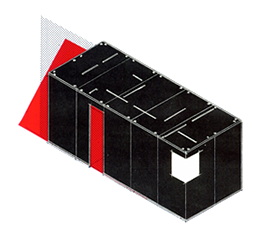
Situated Cinema - WDNX
A Project by Thomas Evans, Craig Rodmore,
Will Vachon and Solomon Nagler
Situated Cinema Project - WNDX explored the intersection of film and architecture through a rejection of conventional spaces and modes of cinematic representation. A collaborative project involving the efforts of architects and designers, the project reinvented the cinema space as temporary and mobile. Through the creation of a mobile, micro-cinemas that was assembled, disassembled and reassembled in four location in Winnipeg during the WNDX Film Festival, the experience of the cinema was integrated into the city, the city into the experience of the cinema.
Referencing the situationist drift through the city, the labyrinth-like design of the Situated Cinema invited people through the dark entrance, slowing them down as they drifted their way through the unexpected and mysterious space of the micro-cinema toward the projected image, a series of 16mm films that looped continuously.
The use of silent 16mm films has two effects: it emphasizes and exposes the mechanics of film-based production and projection, while at the same time, it enable us to alter the experience of the (normally hermetic) cinema space by introducing the sounds derived from and based on the cinema’s surroundings.
Instead of the immobile upward gaze required of the traditional cinema, in the micro-cinema work is experienced with downcast eyes on a luminescent light table. Handmade and heavily textured, the films are offered as a kind map, a topological study of the body of the film. The light cone is projected through a middle section of the structure, referencing experimental work’s concern with light and the sculpting of light in a traditional cinema.
The WNDX Festival Commissioned Six filmmakers to make 16mm films for the cinema; Alexandre Larose (Montreal), Alex Mackenzie (Vancouver), Caroline Monnet (Montreal/Winnipeg), Heidi Phillips (Winnipeg), and Izabella Pruska-Oldenhof (Toronto).
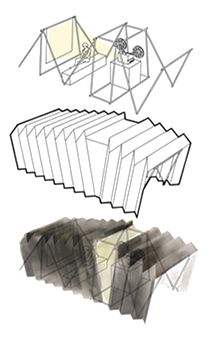
Folding Cinema
A project by Will Vachon, Samantha Bruegger, Solomon Nagler,
Paul Zylstra and Craig Rodmore
Completed in the context of a free lab at Dalhousie’s school of Architecture, Folding Cinema was designed as an intimate projection space that can be assembled in various parts of the city in a short period time. It has tiered seating and a 16mm projection platform that also functioned as shipping crates. The exterior cladding was modular, and constructed out of light weight fabric and coroplast sheeting. Its sharp angular structure resembles a camera bellow when assembled.
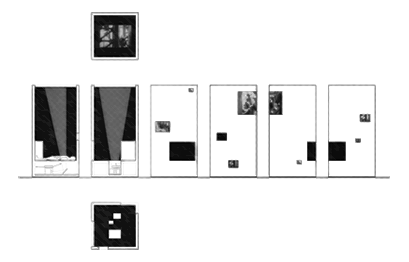
Vertical Cinema
Design Proposition by Thomas Evans and Jonathan Mandeville. Will feature original 16mm loop by Solomon Nagler and Alexandre Larose.
The Vertical Cinema Project re-imagines the reception and projection of celluloid images as a gesture for public space and references the primordial origins of cinema; celestial contemplation, an ascending transcendental gesture toward a ceiling fresco, a sky. Stargazers enter into a towering cinema structure and lie down on a plinth containing a looping 16mm projector, refracting light upwards, with openings for the public to peer into the kinetic train of celluloid frames.
The vertical cinema's cladding creates a distinct daytime and evening presence. Sunlight is filtered into the space through strategically designed permutations, creating an inverted magic lantern, another precursory form of the cinema effect. As the city fades into twilight, the cinema is turned on, flickering images emanate through the cladding, calling attention to the structure with a light source and presentation of images that is radically different from ubiquitous video projections/displays that ornament cityscapes.
Moving beyond the structures and mechanisms of conventional cinema, The Situated Cinema Project emphasizes celluloid film as a medium of public intervention.
The Situated Cinema creates a cinematic experience that circumvents the processes of transfixion, overt-identification, and narcissistic reflection so often embedded in the form, content, and experience of traditional forms of cinema. Its aim, so to speak, is to “unglue” the spectator from the poetics of straight forward narrative and the archetypal architecture of the cinema by expanding the both means of representation and reception.
